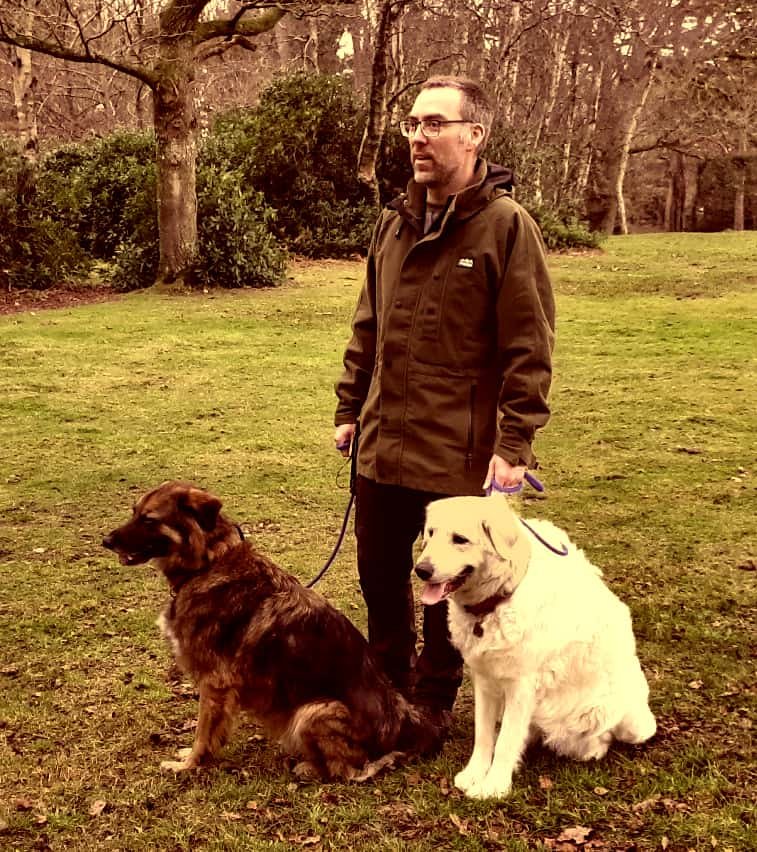GET IN TOUCH
Contact Us

02381 550079

nick@wellbehaveddogs.co.uk
Training
Dogs are pack animals. This means they are born with the desire and ability to build relationships and this is what we play on when we train dogs. Whether it’s obedience with a puppy, teaching a skill like scent trailing with an older dog, or behaviour modification with any dog, we’re tapping into the dog’s ability to learn and in the background the relationship is growing.
Here are a couple of examples: Is your Dog pulling on the lead? If you can tune them into the handler to build the relationship, the dog becomes more engaged with the handler and walks calmly next to them. Is your Dog growling and barking at other dogs? We can build the relationship so when the handler tells them “Knock it off, nothing to see here” the dog thinks “Sure, mum, I’ll leave it to you”.
Obviously, this is oversimplifying things a bit and makes it sound easier than it is – but the principle is correct. The key is to choose the right method to enable the handler to build the right sort of relationship to achieve the goal. And the underlying truth always remains – anything we do with dogs is about building our relationship with them.
Why Is Training Important?
It all starts with obedience. Not only is this a good place to start to build the all-important relationship between you and your dog but it is crucial for teaching your dog the commands it will need to make life easier and more enjoyable for everyone – for the rest of its life. If you are able to, Puppy classes are a good place to start with this. Not only do you learn good technique for training obedience but your dog learns to be comfortable within the presence of other dogs. However, it can’t be stressed enough that a one-hour lesson every week for a few weeks is just the tip of the iceberg. You’ll need to spend time at home practicing and making sure the lessons stick. Consistency and repetition are key in this to build a good foundation for the future.
Building A Relationship Of Trust
Whether you’re training simple obedience to a puppy or more advanced skills to an older dog, there are techniques to teaching a dog which are important to know and observe. The areas that I often find it necessary to concentrate on are timing and positive reinforcement. Getting these right is critical to the dog’s understanding of what is required, and to making it stick. Once you have mastered this it will become much easier to teach your dog, no matter how old it is.
A Question Of Balance
Together with positive reinforcement, we need to understand the role of negative reinforcement – about rules and boundaries, and how the dog knows what is a wrong thing to do. It’s important for any dog living with us in our homes to have a set of rules. These will help you co-exist on a day-to-day basis. For example, the dog isn’t allowed to steal food from the kitchen counter. Rules also address the issue of leadership. All dogs need leadership, but different dogs need different amounts. Without leadership, they can believe they will have to take on the role of pack leader themselves, and this is never a good situation. This is where a balanced training approach is important. It cannot be overstressed how important it is to give a dog a “correction” or to tell it “No” so the dog understands where it has overstepped the line. This must be done in a fair, humane way – it is ABSOLUTELY NOT about hitting your dog or being cruel in any way at all.

The keystone of my training of dog owners is that I teach them how to reward correctly at the right time, and how to correct fairly at the right time. These are the basic building blocks of dog training and frequently make the difference between success and failure.
- Basic training gives us the building blocks for all of the dog’s learning – and it’s all based on the relationship with the handler.
- Start early if possible – ideally with puppy classes, and remember you have to work at it outside of classes.
- Proper training is a balance of positive and negative reinforcement, of reward and correction, delivered at the right time.
- The precise techniques used will depend on the individual dog and the individual owner.
- You need to learn how to teach your dog – you are both learning together to build your relationship.




